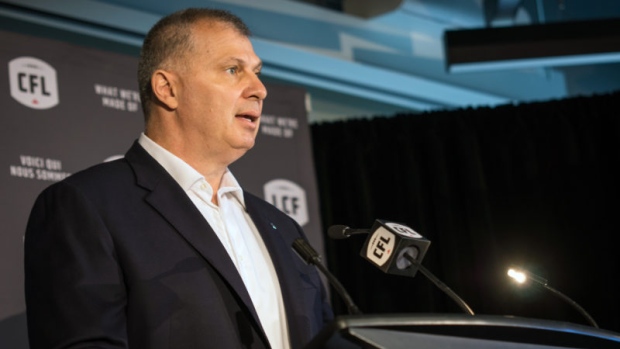Nov 11, 2021
CFL facing many challenges in the road ahead
Declining scoring, league economics after two years of massive losses, and a new collective bargaining agreement will all be stories to watch this off-season, Dave Naylor writes.
By Dave Naylor

If there’s one thing this Canadian Football League season has proven it’s that the league and its players are adaptable.
Adaptable to a 14-game season without preseason games, to playing in partially open stadiums, to teams absorbing financial losses they may never recover to keep the sport going, and, finally, to playing its championship game, the Grey Cup, on Dec. 12.
All of that said, this regular season moves into its final two weeks with the teams feeling a certain sense of relief, knowing that things could certainly have gone worse.
The CFL has had one COVID-19-related postponement to date and minimal other distractions due to the virus that shut the league down in 2020. The game came back, the television audiences have been healthy, and the existential threat of merger with the XFL has gone away.
None of which is to suggest that the CFL is in the clear.
Sports leagues consist of a product and a business model, both of which must be in working order for a league to be viable.
When it comes to the CFL, both the game and the business are going to require some examination this off-season as the league charts its course for the future.
It’s often said that, in the CFL, the game is never the problem. While that’s largely been true throughout league history, there are reasons to ask whether that has changed, with scoring down an average of roughly six points per game from 2019 and almost 10 points per game off the average in 2017.
There’s no doubt a lot of this is driven by the pandemic, which is no real surprise given how many predicted that defences would hold an advantage this season as continuity and precision matter more on the offensive side of the ball. Add in the fact that nearly one-third of players on opening-week rosters had never played a CFL game and you understand why this year’s version of the game looks a little off.
There is a danger, however, in attributing everything we see to the pandemic since some of the current defensive trends were already present before the forced break of 2020.
So, if the pandemic didn’t start the CFL’s defensive trend, what did?
A lot of football people claim it has a lot to do with the league’s elimination of padded practices, instituted midway through the 2017 season. At the time, many coaches warned that prohibition of contact in practice would make it very difficult to develop linemen, especially offensive linemen, who are often Canadian players in need of a year or more of development before they are ready to contribute.
How has it affected things? In every season since 2017 teams have had more trouble rushing the ball, more trouble gaining yards in general, have surrendered more sacks and had a worse touchdown-to-interception ratio.
None of that evidence may be enough to bring back padded practices, given the priority of safety in the game these days.
So, what else can the league do? It could look at the way teams play the majority of their Canadians on offence, meaning that defences are dominated by Americans, where there is a much deeper pool of players from which to choose.
The result is that often highly skilled, experienced defensive lineman, many with experience in the NFL, go up against often inexperienced Canadian offensive linemen, who haven’t even been able to practice with contact.
And, in the case of this year, without a preseason as well.
Would forcing teams to play at least three of their Canadians on defence produce a more offensive game, and at the same time balance out the supply/demand issue for Canadian offensive linemen? It probably would. It’s something the league has discussed before and could come under more focus this off-season if it is serious about engineering more offence into its game.
Also under scrutiny will be the league’s economics.
The CFL has come through two seasons in which teams have had to swallow huge losses, making what amounts to investments in their teams to keep them alive through the pandemic.
Getting a true read on how much attendance is down or exactly why that’s happening is difficult, given the myriad factors such as human nature, partially closed stadium seating and vaccine requirement.
But this is still a gate-driven league, so the focus this off-season must be on getting people back in the stands.
The fact that the league’s television numbers have remained consistent and strong despite the year off is a sign that fans haven’t lost interest in the game. The trick is going to be converting them into ticket buyers.
And then there is a matter of hammering out a new collective agreement with the players when the current one expires after this season. CFL players may feel hard done by over the past two years but sitting down to negotiate with a group of owners who’ve collectively blown through tens of millions in back-to-back seasons isn’t going to be easy.
The league may want to redraw its baseline economics through the CBA, opening the door to sharing in its growth with the players. Where to draw those lines with so much uncertainty about the future won’t be easy.
So yes, nearly one full calendar year beyond the first cancellation of a Grey Cup game in more than a century, things are far more stable than they were, and there is less trepidation about the future.
But let’s not pretend all the CFL’s challenges are behind it.

